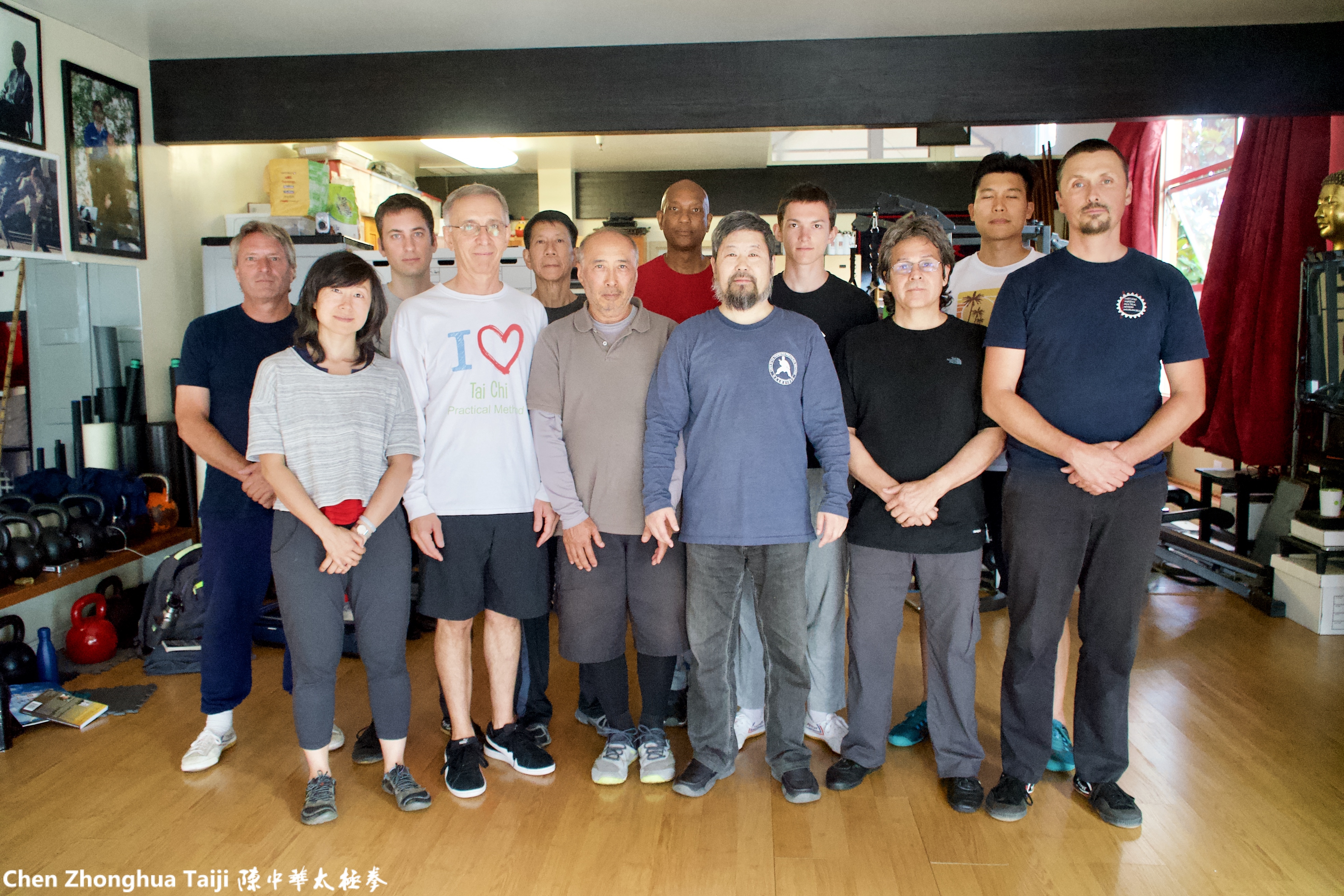 第一天
第一天
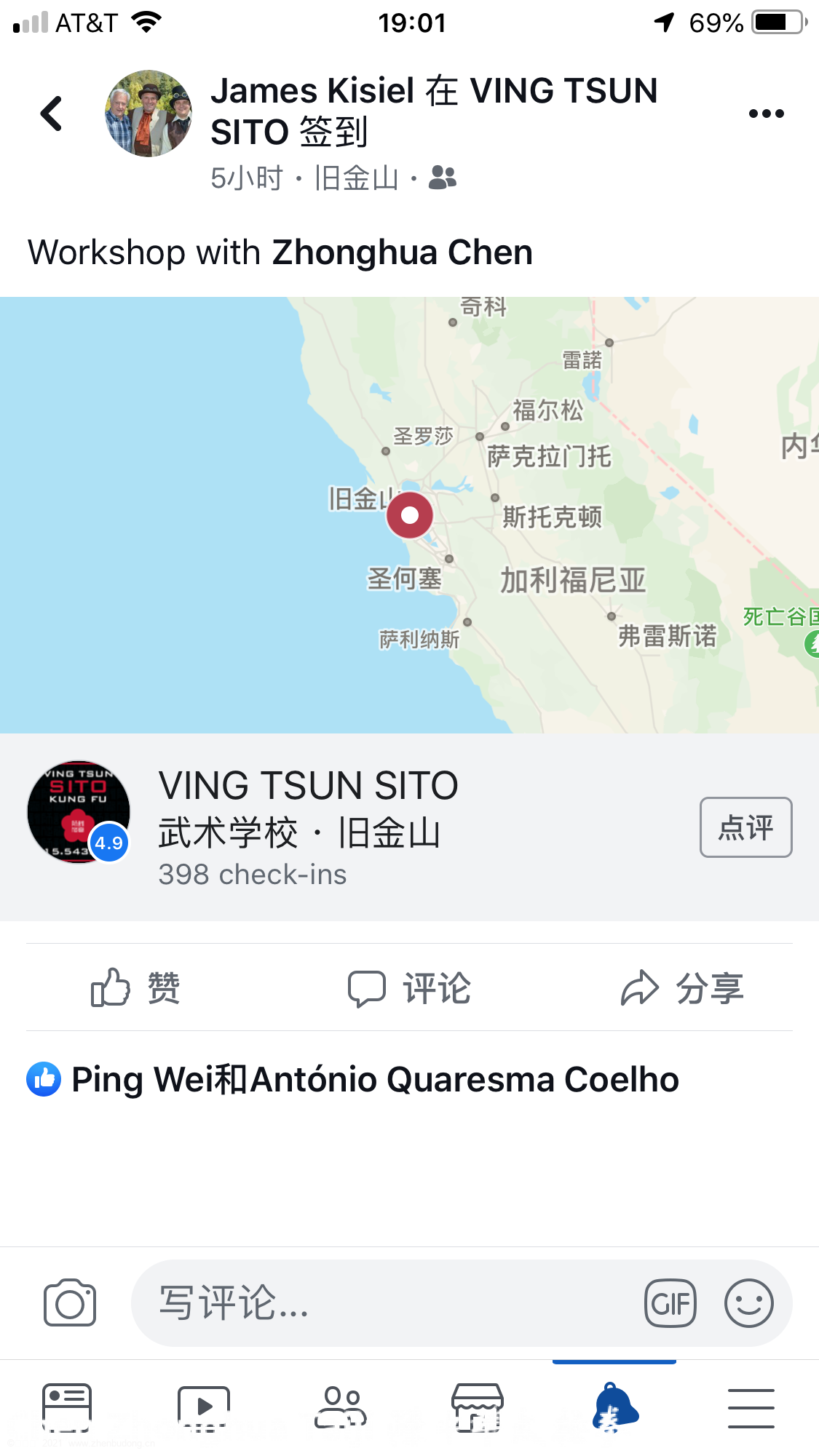
- The kua has to come out (draw a line forward with the kua). Don’t move anything but the kua.
- Partner exercise: partner sets a dot a few inches in front of the kua; you have to get your kua to touch it.
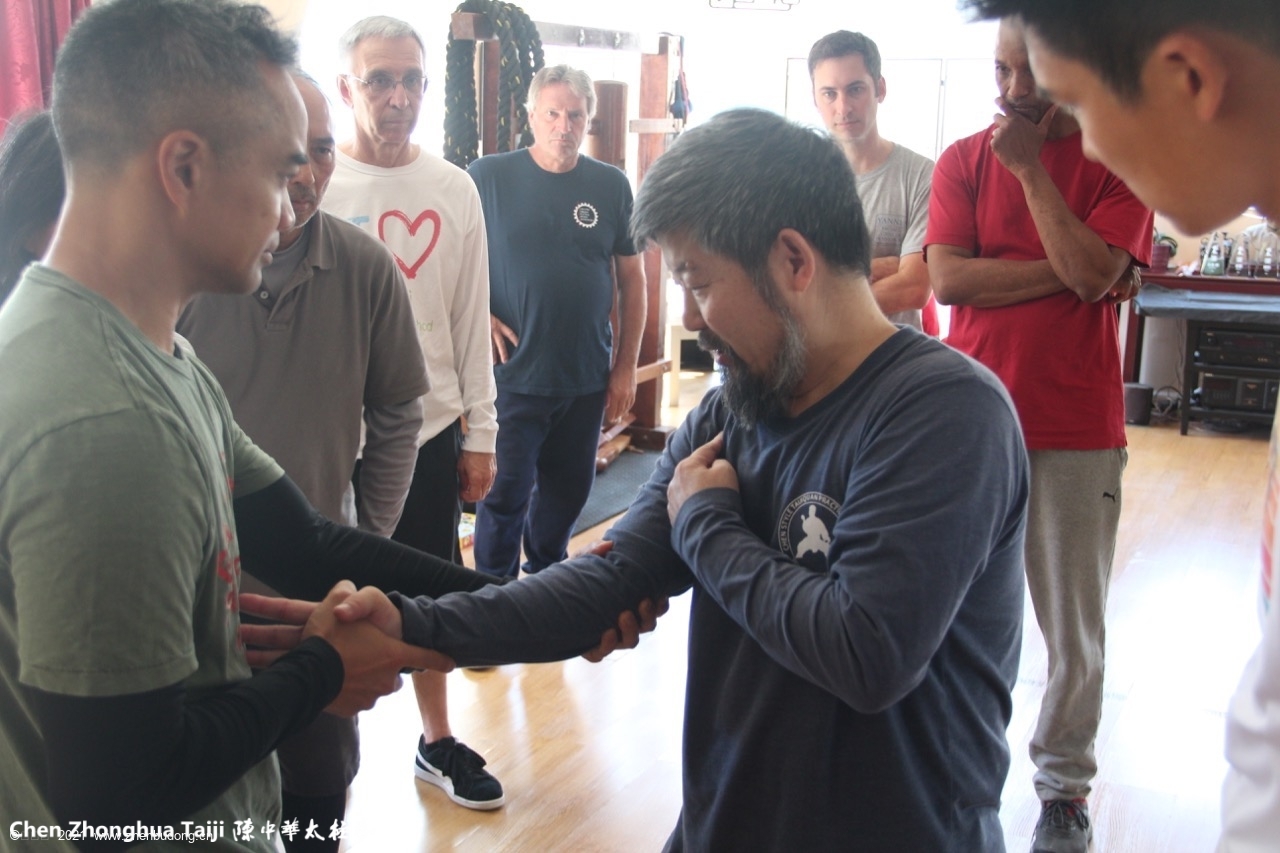
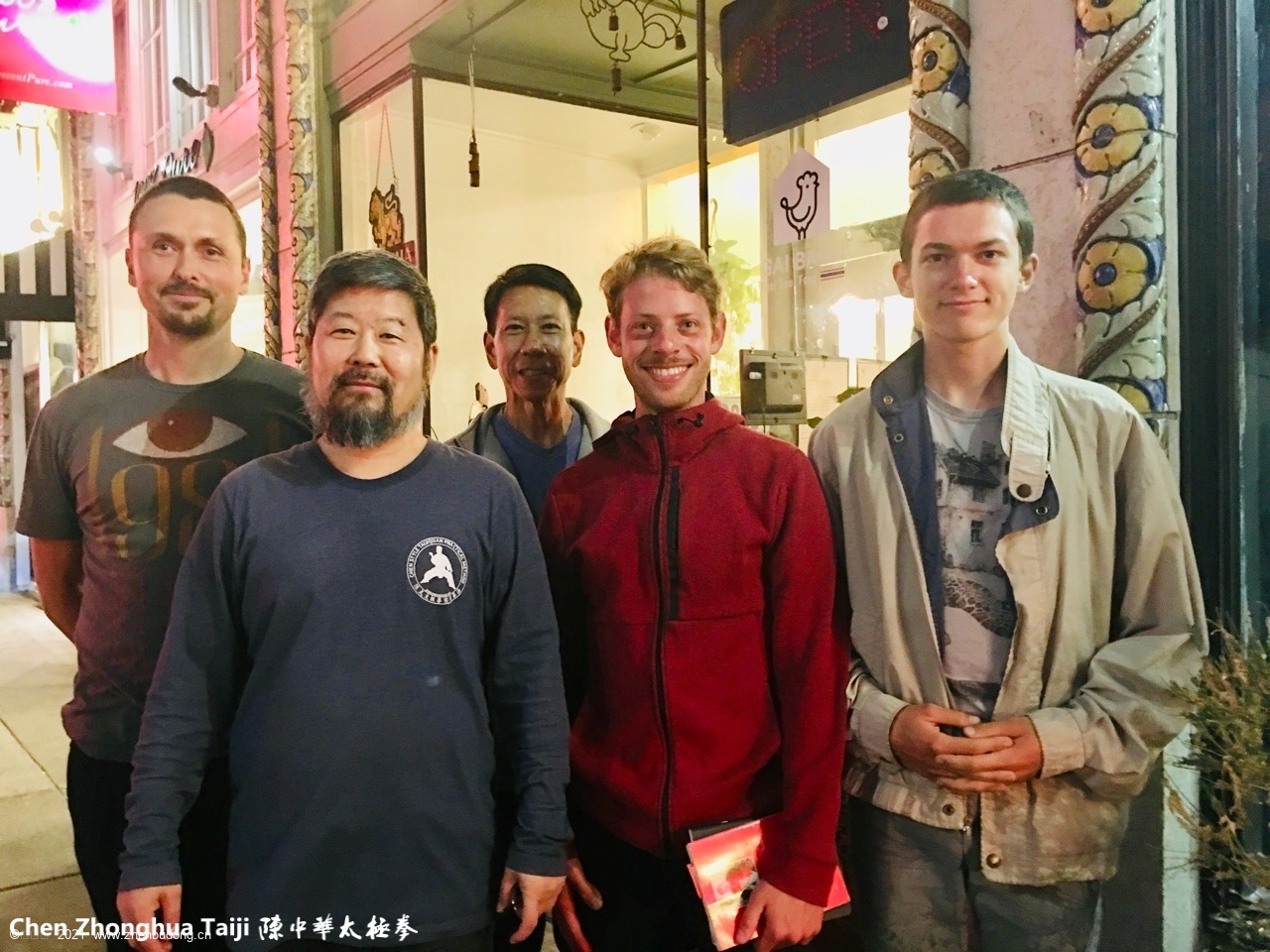
 Add speed – do it 5 times fast. Add power – have someone hold onto your kua from the rear. Add stepping – connect it to your elbow and don’t let the elbow move.
Add speed – do it 5 times fast. Add power – have someone hold onto your kua from the rear. Add stepping – connect it to your elbow and don’t let the elbow move.- Learning – have to make ideas based on physical reality, not on ideas.
- It has to never be off – there has to be a line to the foot (toe). The power has to split at the kua.
- The opponent’s power has to dissipate: it splits at the point of contact: 50/50.
- Structure is like a ball in that the volume doesn’t change – the air doesn’t escape. The structural tension stays there. When we “go down” we lose that structure.
- Learning – micro and macro. Consider the specific example. Consider it outside of this specific example. Have to be able to change perspectives. Master Chen often gives different perspectives but we miss it because we’re too focused on one thing.
- Gun (滾?) – everything goes backward except the tip that goes forward
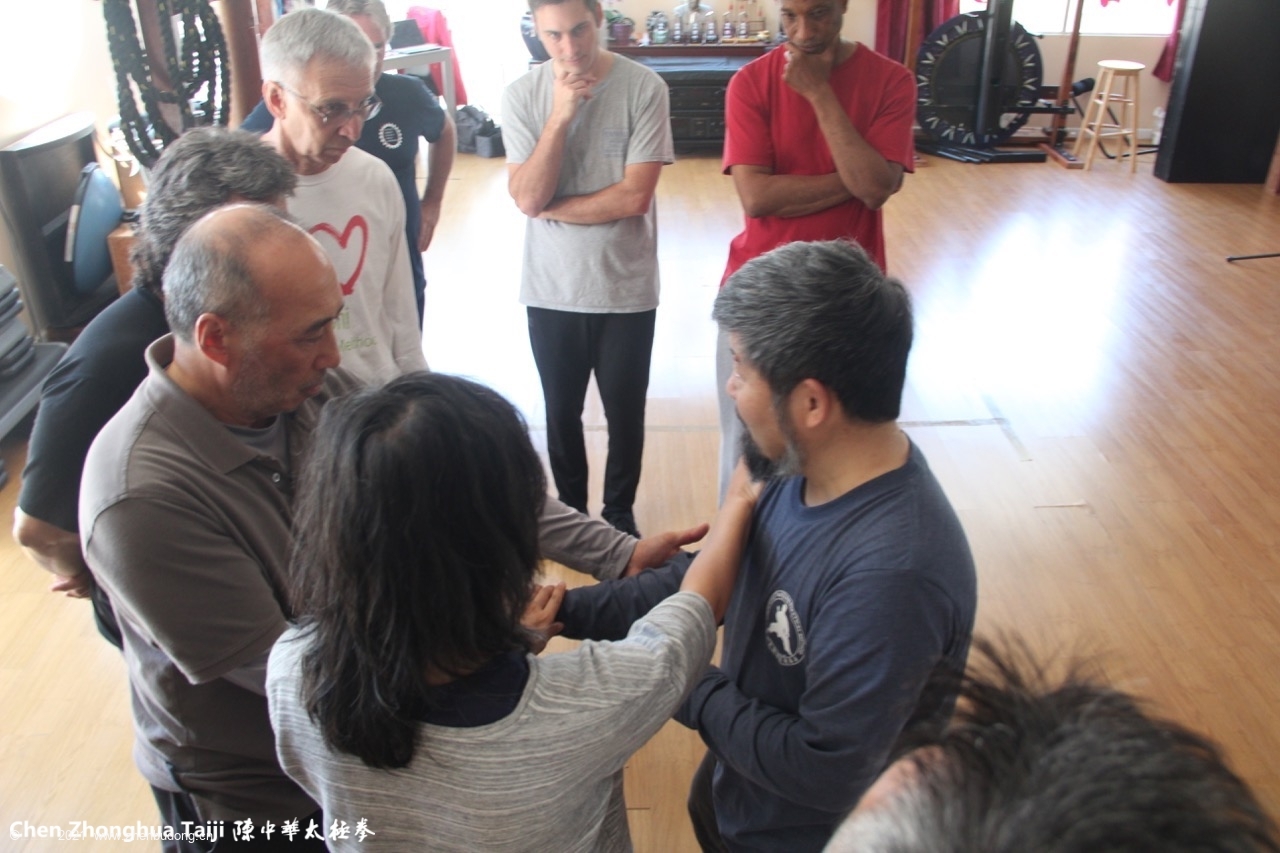
- There’s only one way to know your progress: your opponent falls down and you don’t know how or why he fell down. It’s accidental. In 8 years of practice this might only happen a few times.
- Rotate. Stretch linearly. These two actions must be distinct. If you turn while you stretch, you will miss your mark. Rotate is like aiming; stretch is like firing the gun.
- The kua rotation has to be on the foot. No knee. There has to be a line from the kua to the heel.
- Copy the teacher physically. The exact position when he demonstrates is the right position.
- Only when the structure does not move, energy moves. When the structure moves, energy does not move.
- The dantien works as a third hand: you can settle the elbow and/or kua on it and it will free up the other hand / foot
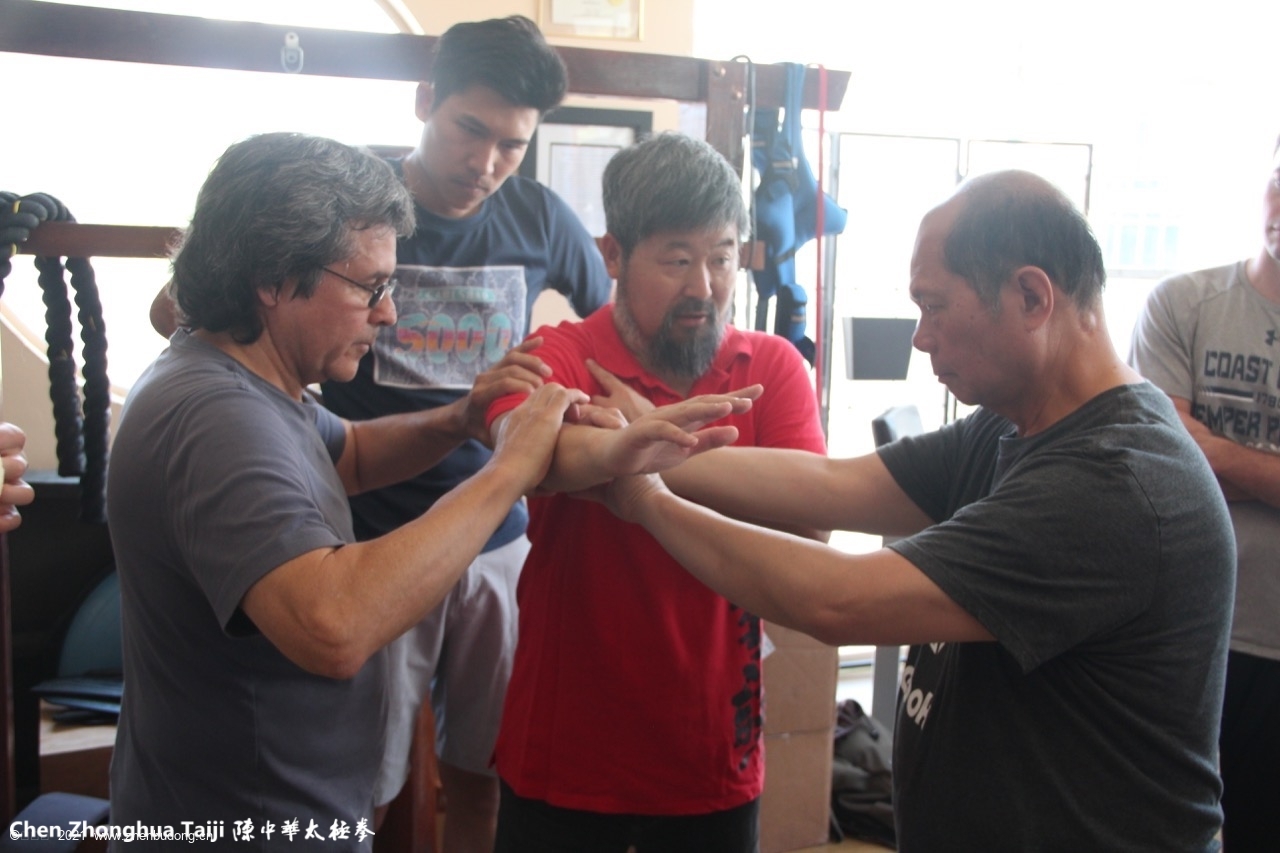
- No power = no engagement. When gears are not engaged, they are just coasting / not physically connected. The connection is a directional hook. Aka meridians / energy path
- 3 ways to not move hand: really does not move in space, doesnt move relative to another position that isn’t moving, stays in line (stretch)
Day 2
- The correct move is unique, almost impossible to find. You are going to fail and fail before you can filter down and find correct.
- Rotation of the elbow makes the hand move. When you move your hand, the power is on your elbow. It cannot be on the elbow; it is a joint. The outside (the head, hands, feet / 5 heads) cannot move.
- Reversal of Intent. Grab onto something you can’t move until it’s so strong your body has to move. Use your opponent’s body as a point of reference.
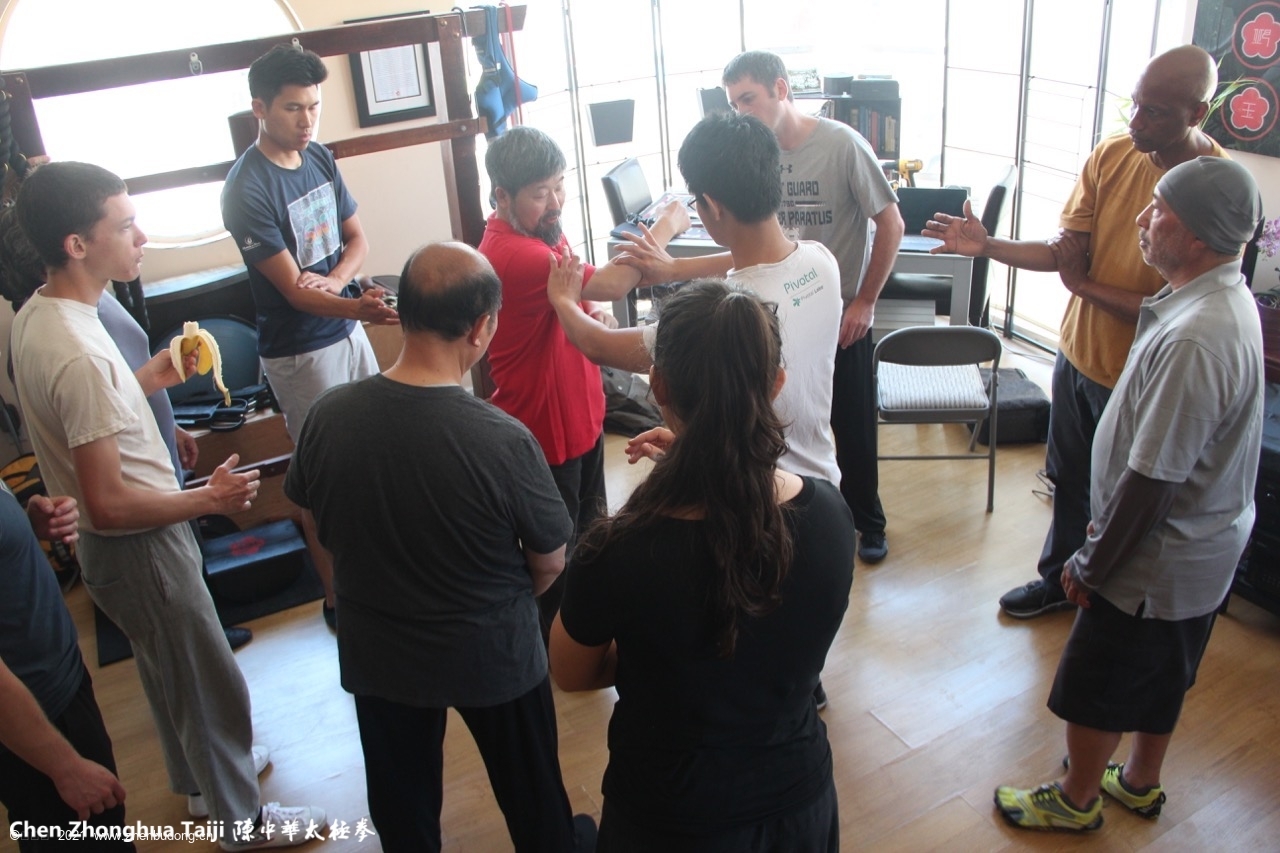
- Horizontal climbing: find a position with your hand, use it to pull yourself up. Find an anchor for your feet, so you can move your hand. Inchworm. At no point is there ever confrontation. Secure one, the other becomes loose.
- Every open joint is a barrier; it prevents the opponent from knowing when you move. It is like double paned glass, there is space in between. Taiji moves don’t let your opponent react.
- How to not move the hand; elbow must open, shoulder should not move.
- General guidelines on body parts (overall it’s open/close)
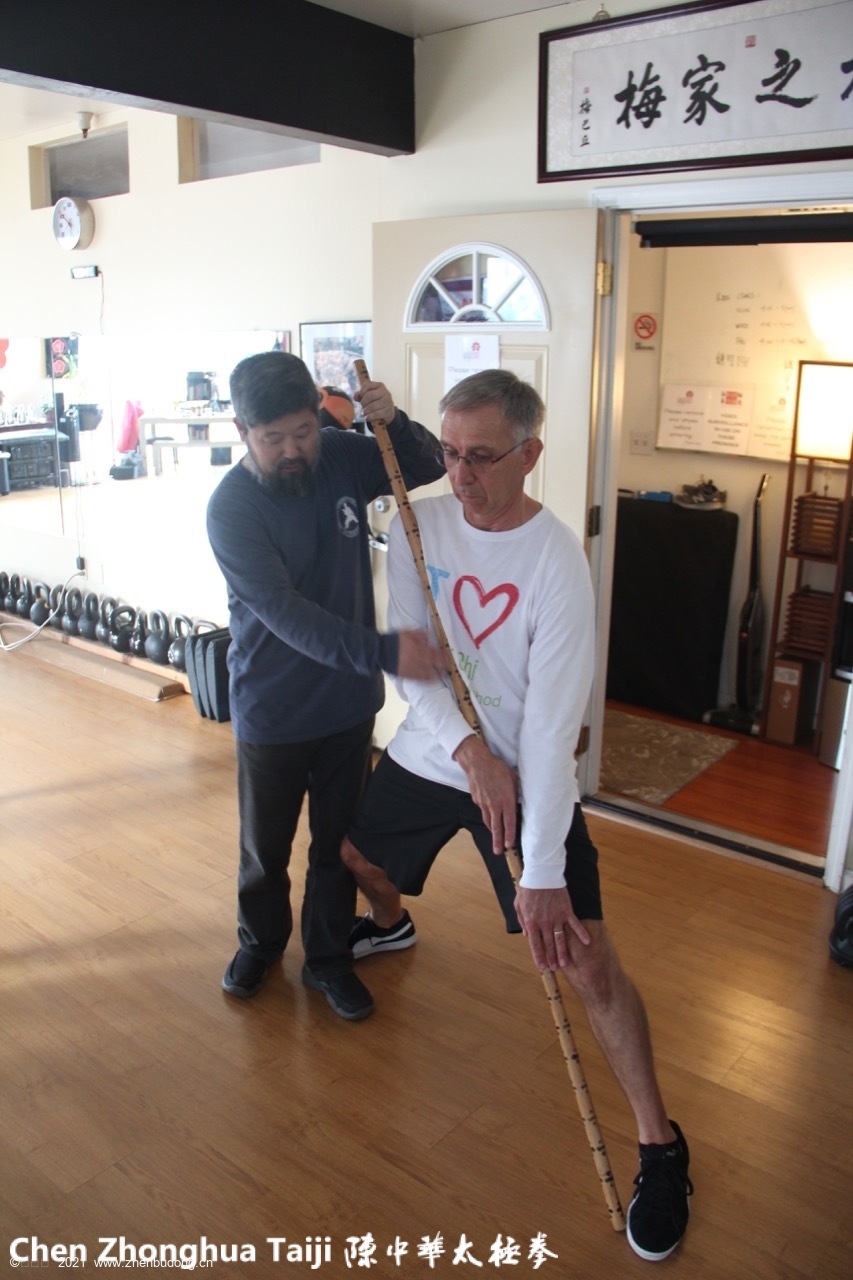
- Key points | mistakes
- Hand: to spread out | to atrophy
- Wrist: to sit | to bend
- Elbow: to sink/plumb | to rise
- Shoulder: to be alive/fall down | to protrude
- Neck: to stick (to a wall behind you)/erect | to drop the head
- Head: to lead/push up | to lower/bend the head
- Armpit: to squeeze open )( like this shape | to jam
- Kua: to open/rotate | to lock/dead/fall down linear
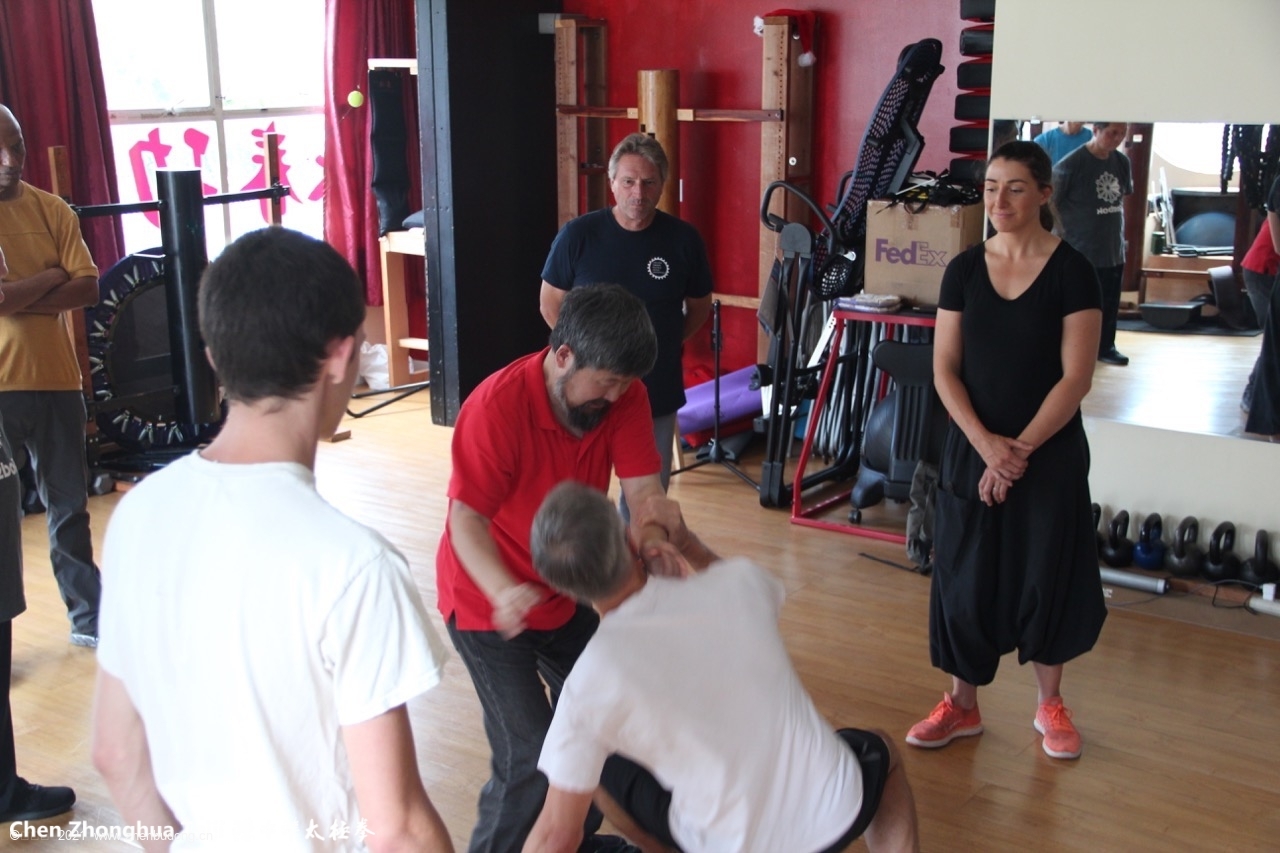
- Knee: to be fixed/inside is empty (stretched open) | to push/jam/toss
- Ankle: to erect/be vertical/stake | to slant/be sideways
- Foot: to blot (like a blotter, heel and toe can roll over)/roll | to be flat/dead
- Waist: to stretch out/round | to be loose/toss/shrimp 低頭蝦腰功夫不高
- Dang: to be rounded/full | to be cornered/have a tip
- Chest: to hollow (and solidify the dantien)/push down/be empty 凹 | to protrude 凸
- Back: to be a bow/rounded (tiger’s back, bear’s waist) | to be flat (angel’s wings… the shoulders protrude)
- Stomach/dantien: to be solid/full | to be deflated
- Buttock: to contract/tuck/wrap | to protrude
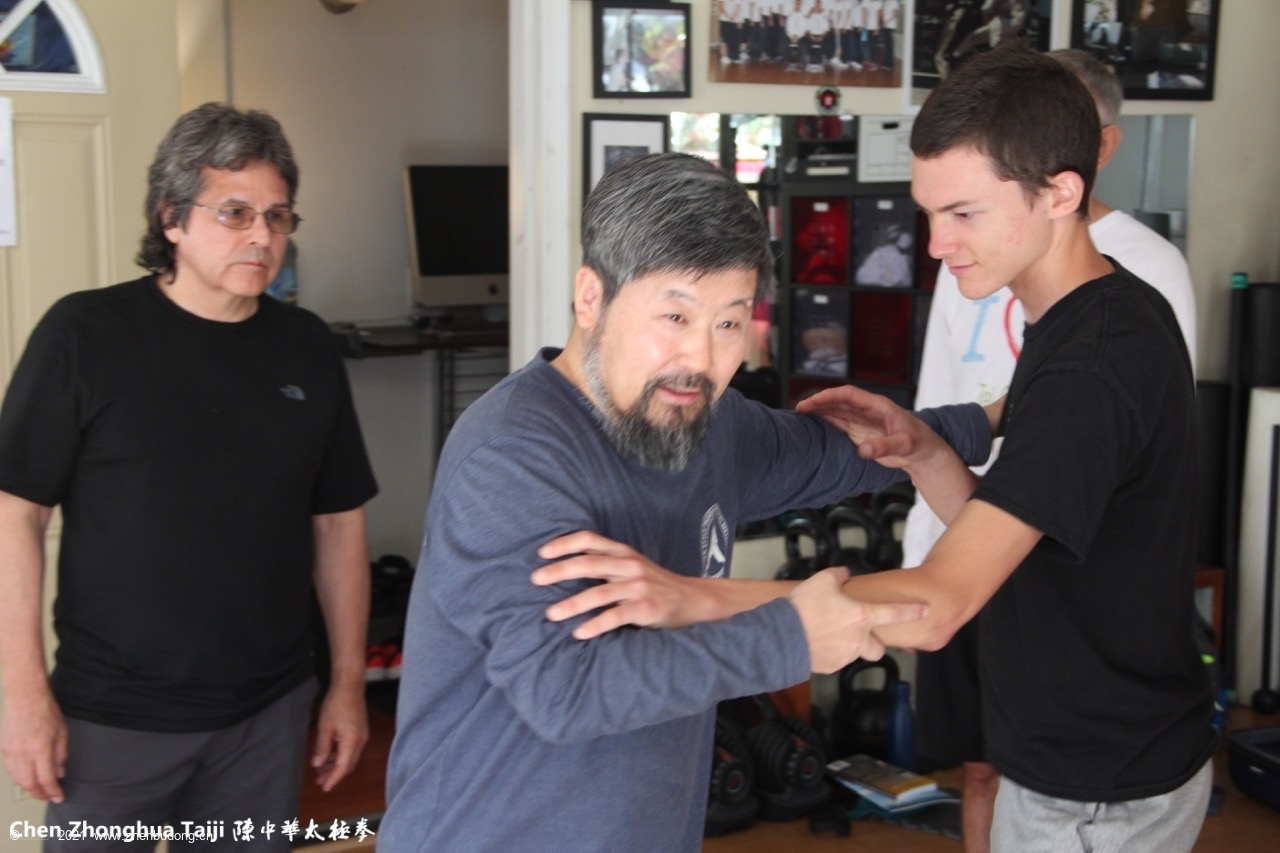
- On the skin: like brushing off. Not on not off. Conducting is only when you spread.
- Buddha’s warrior drill: don’t move the hands, stick foot in and use the heel.
- Power has to be on the outside.

- As elbow goes in, hand goes out.
- Method of learning: pretend to be stupid.
- Someone who does not understand can begin to understand just by repeating the words.

- The two rotating cylinder example: when they rotate the line doesn’t change. It’s an illusion to look at each cylinder’s rotation individually. The dot where they touch never changes. The alignment never changes. Don’t rotate and lose the line – it’s like carrying one of the cylinders with the other’s rotation.
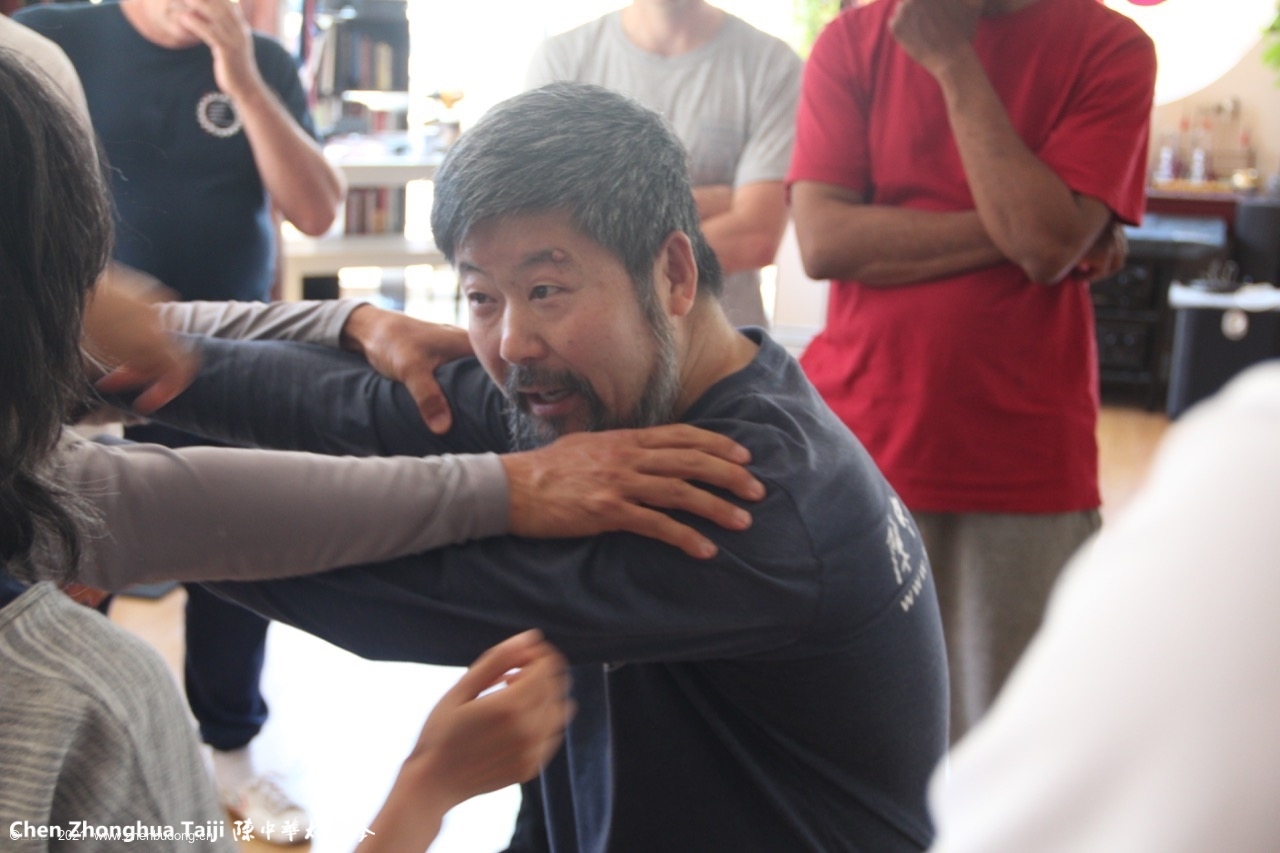
- When I was doing six sealing four closing with speed, Master Chen told me that I was starting to find the axis in the upper body but my leg was not stable so the hand was going off course. He did the move and I felt the back of his arm and his back – there was a strong axis in both places. He had me feel the underside of his thigh and lower back. It felt similar: there was a strong axis there too. He stressed the importance of the tailbone. It acts like a third leg to stabilize. I saw his kuas rotate but his tailbone didn’t move.
更多帖子
- 讲解齿轮箱第一步 (强烈推荐)
- 高山仰止 景行行止—记陈中华老师的首期国内实用拳法培训班 (强烈推荐)
- 2012年11月30巴西讲座 (强烈推荐)
- 大青山国际太极学院冬训营 (强烈推荐)
